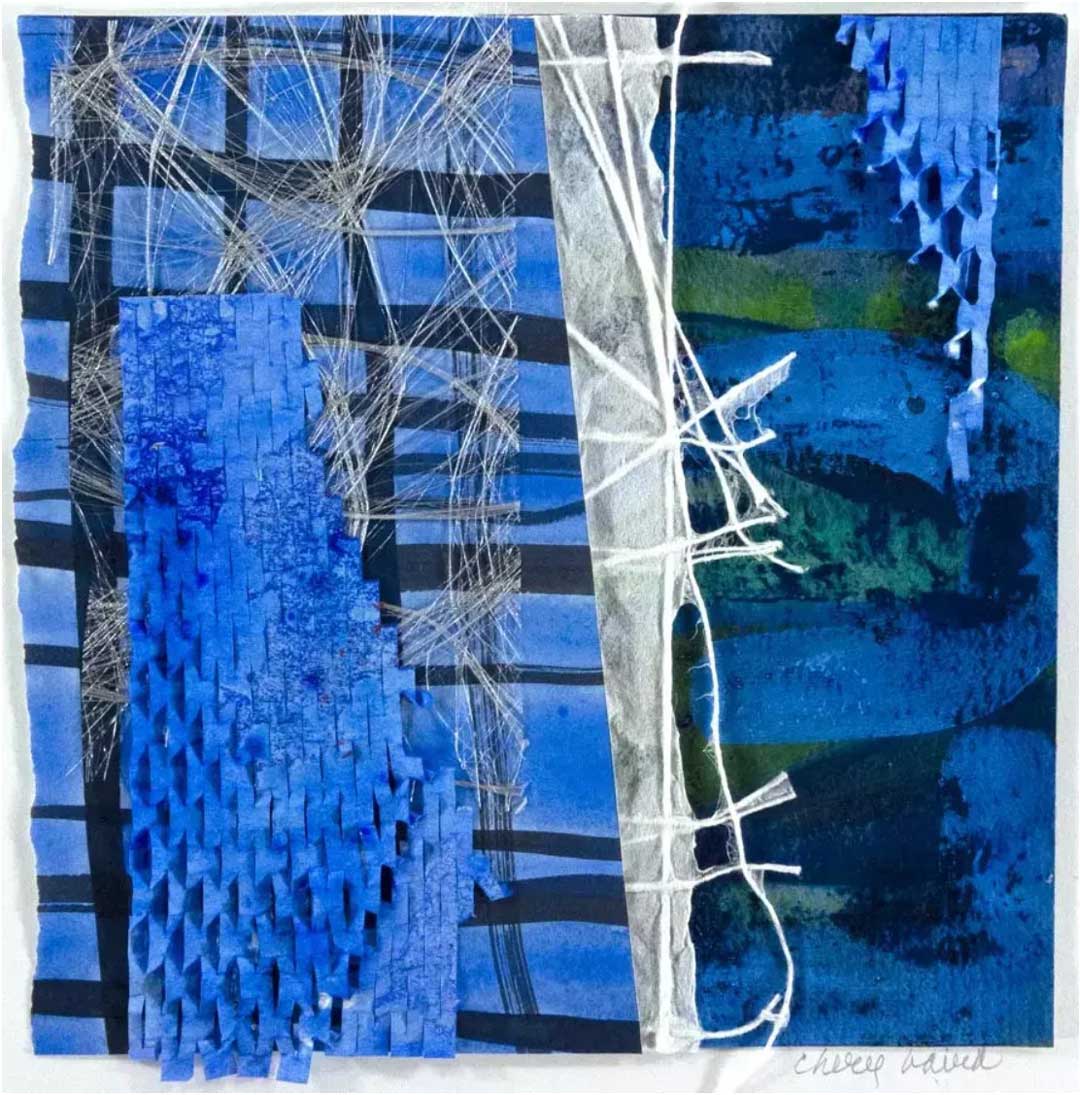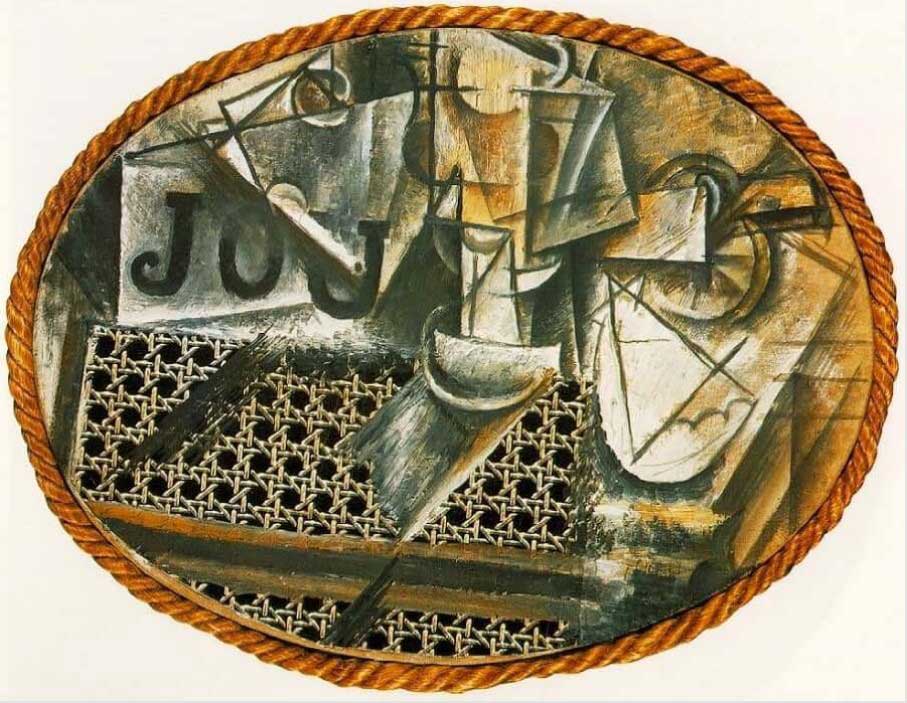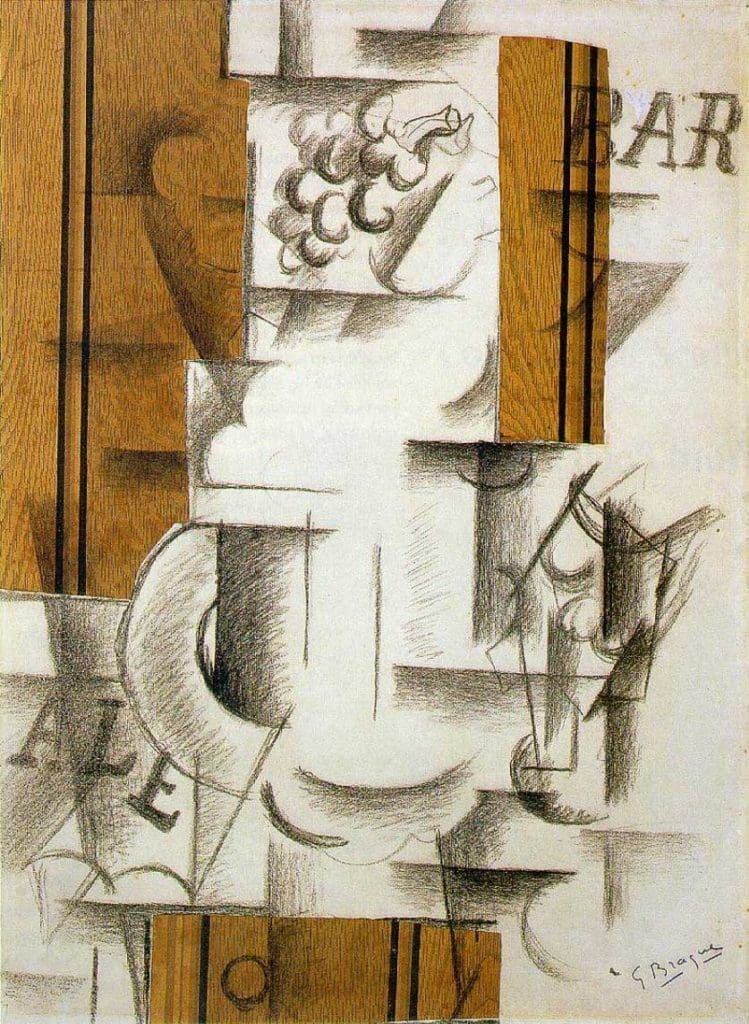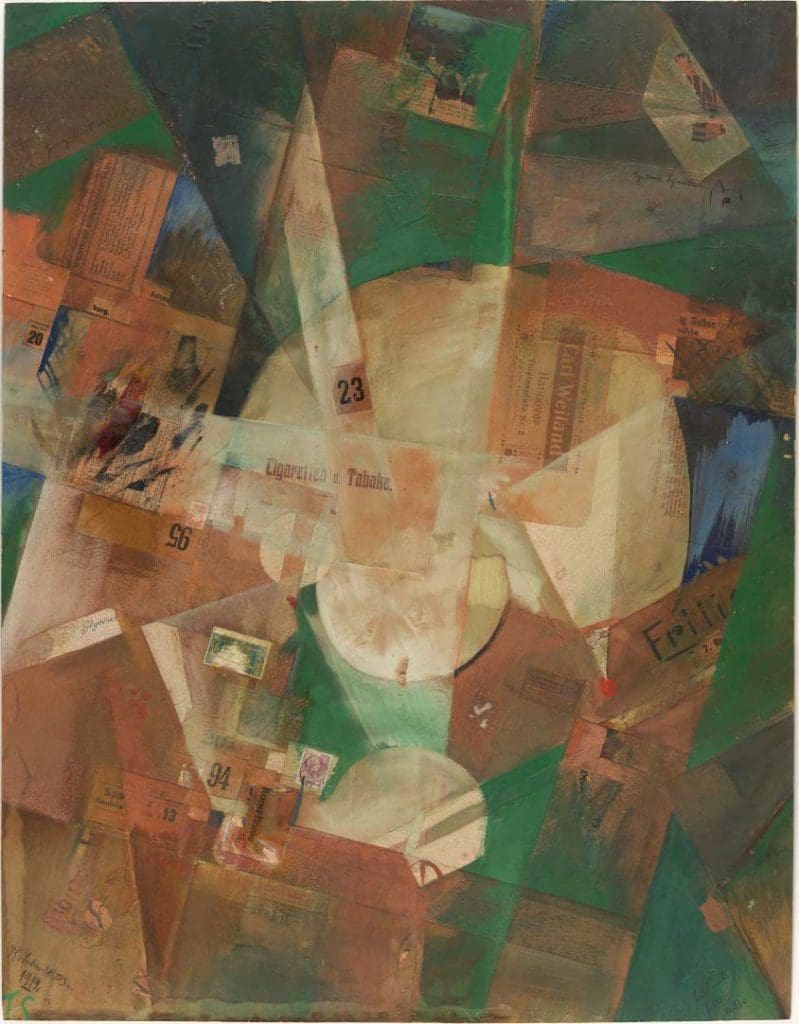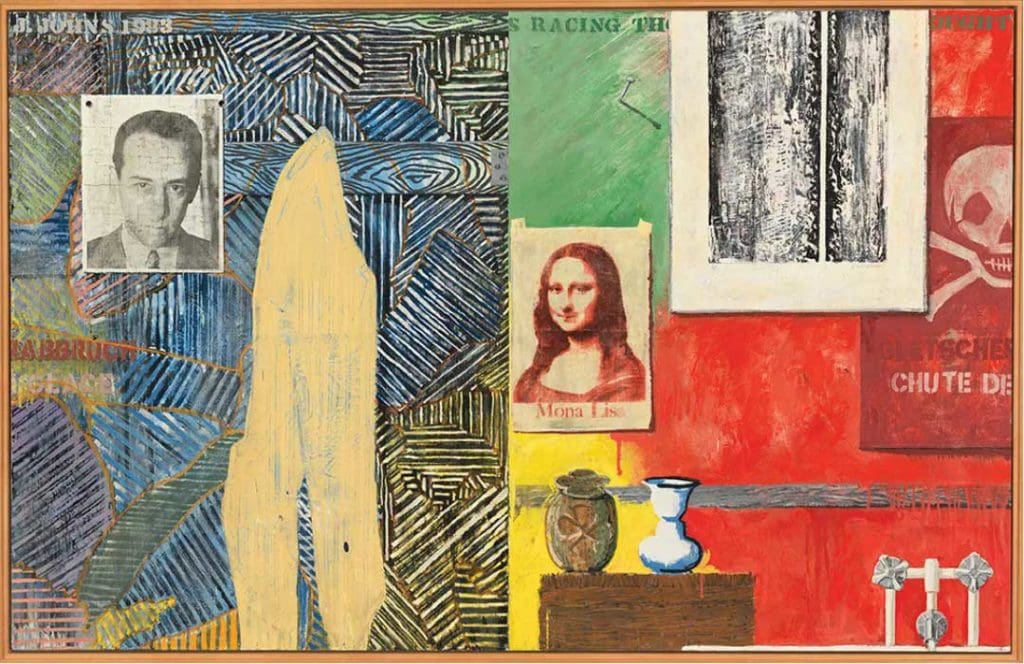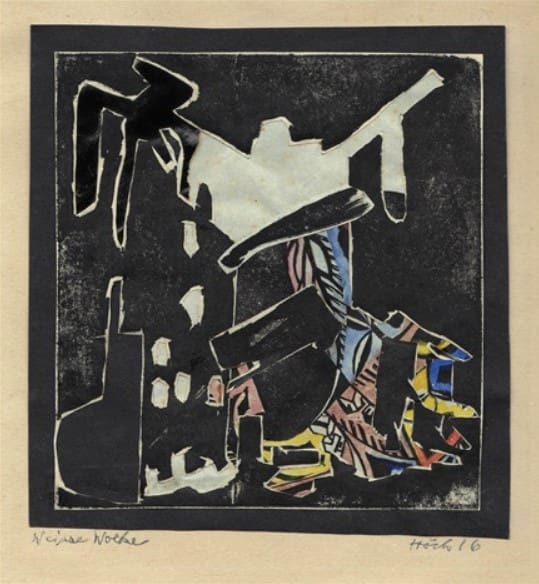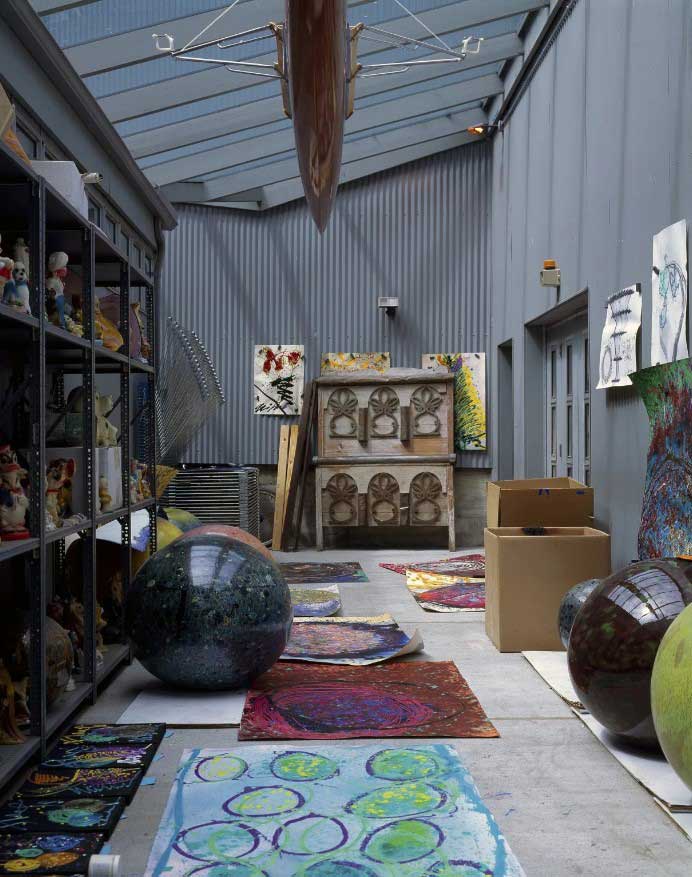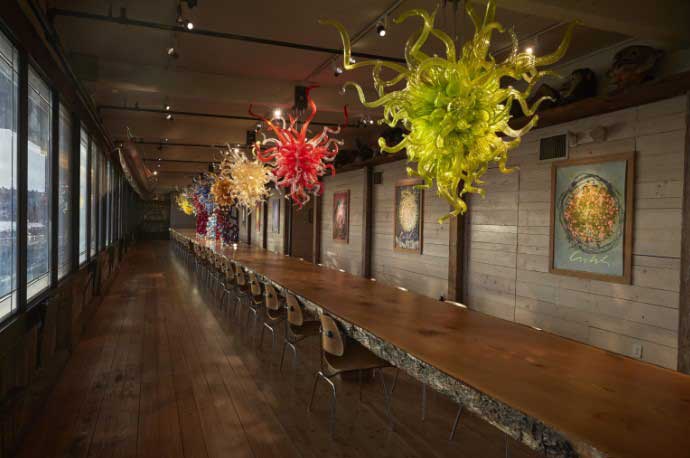Collage is a technique of art that involves using different materials and objects, sometimes found elements, assembled to create a single image or piece of artwork. Collage is believed to have originated in the early 20th century with the advent of modern art movements like Cubism and Dada. The technique has evolved significantly over the years, from the physical collages of the past to the use of application technology to create the digital collages of today, such as the eCollage work created by our community member, Jay Zerbe.
Post featured image: Nets and Grids 35, mixed media collage 8 x 8″ by Chery Baird
Using a photo editor, Zerbe takes clippings from digital images of his original canvas artwork. He assembles fragments into a new work of art called eCollage. A process he has demonstrated for artistvenu members who have followed his “eColllage and Beyond, Photoshop Workshop” or in videos featuring his sister Chery Baird, an accomplished professional mixed media and collage artist and instructor.
In this article, we will explore the origin and evolution of both material and digital collage.
The Origin of Collage
The word “collage” comes from the French word “coller,” which means “to glue.” “Coller des fragments ensemble pour créer une œuvre d’art”, or “Glue fragments together to create a work of art”.
The first known artist to use collage techniques was Pablo Picasso. He began incorporating different materials like newspaper clippings, fabric, and other found objects into his paintings, creating a collage effect. In 1912, he produced his first collage work, “Still Life with Chair Caning,” which featured a printed oilcloth and rope that simulated the chair caning.
Another artist who contributed to the evolution of collage art was Georges Braque, who worked closely with Picasso during the development of Cubism. Braque created his first papier collé, “Fruit Dish and Glass,” also in 1912, which featured pieces of wallpaper and newspaper pasted onto the canvas.
Collage and papier collé are art forms that use different materials to create a single image or artwork. However, collage is a more general term encompassing a more comprehensive range of techniques and materials, including paper, fabric, photographs, and other found objects. Papier collé, on the other hand, is a specific type of collage process that focuses primarily on using paper materials like newspaper clippings, sheet music, and other found paper elements. While both techniques involve layering and juxtaposing different materials to create a unified work of art, papier collé refers explicitly to using paper with unique textures and effects.
The Evolution of Physical Collage
Physical collage continued to evolve throughout the 20th century. The Dada art movement, which emerged during World War I, also played a significant role in the development of collage art, with artists experimenting with different materials and techniques. In the 1920s and 30s, artists like Max Ernst and Dada artists like Hannah Hoch and Kurt Schwitters incorporated photographs and other printed materials into their collages, creating a surrealistic effect. In the 1950s and 60s, artists like Robert Rauschenberg and Jasper Johns used everyday objects like newspapers, clothing, and even taxidermy animals in their collages, blurring the lines between art and daily life.
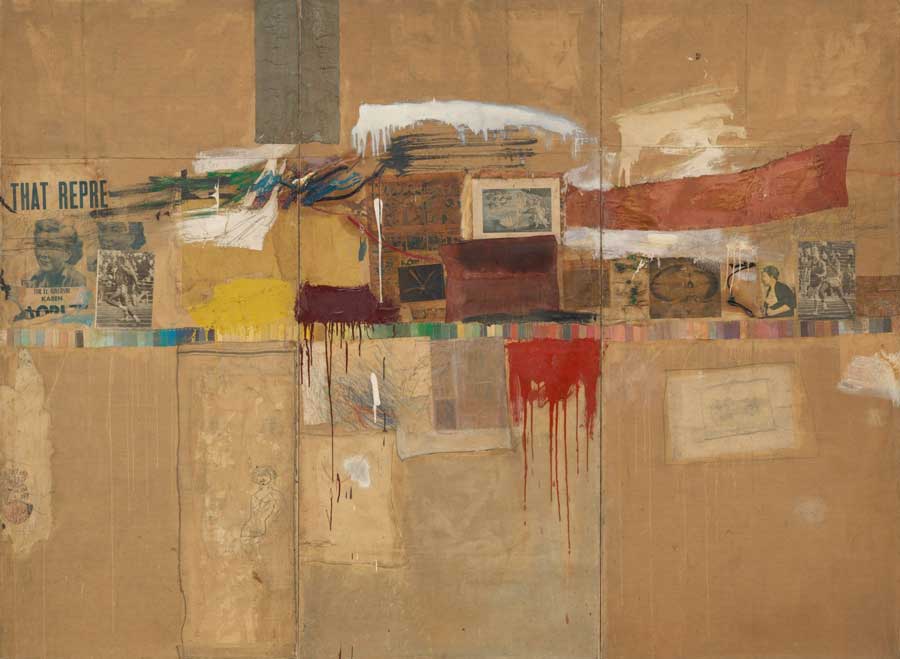
The Evolution of Digital Collage
As digital technology developed in the late 20th century, the art of collage underwent a significant transformation. Digital collage involves using computer software to create collages from digital images and other media. While the basic principle of combining different materials to create a single image remains the same, digital collage is vastly different from that of a physical (Material) collage. Yet, they share the concept of fragment assembly.
One of the main advantages of digital collage is the ease with which different elements can be combined and manipulated. With software like Adobe Photoshop, artists can easily cut and paste pieces of images and materials, adjust their size and color, and apply various effects and filters to create a seamless final image.
Another advantage of digital collage is the ability to incorporate video and audio elements into the final product, creating a multimedia experience beyond the traditional collage format.
The Future of Collage
The art of digital collage will continue to evolve as technology expands. With virtual and augmented reality advancements, artists may soon be able to create immersive collage experiences beyond the physical and digital realms.
In conclusion, collage has come a long way since its inception in the early 20th century. From the physical collages of Picasso and Braque to the digital collages of today, artists have continued to push the boundaries of the technique, incorporating new materials, processes, and technologies. Whether physical or digital, collage remains a powerful tool for artists to express themselves and create unique works of art.
Creating a collage is a fun, rewarding, and unique artistic experience that allows you to explore your creativity and showcase your personality. Gathering different materials and objects, found or otherwise, and assembling them into a single image or artwork can be both meditative and exciting. It allows you to experiment with different colors, textures, and shapes, mixing and matching objects you might not typically think to combine. Whether creating a physical collage with paper and other found objects or a digital collage with software, the possibilities for expression and imagination are endless.

